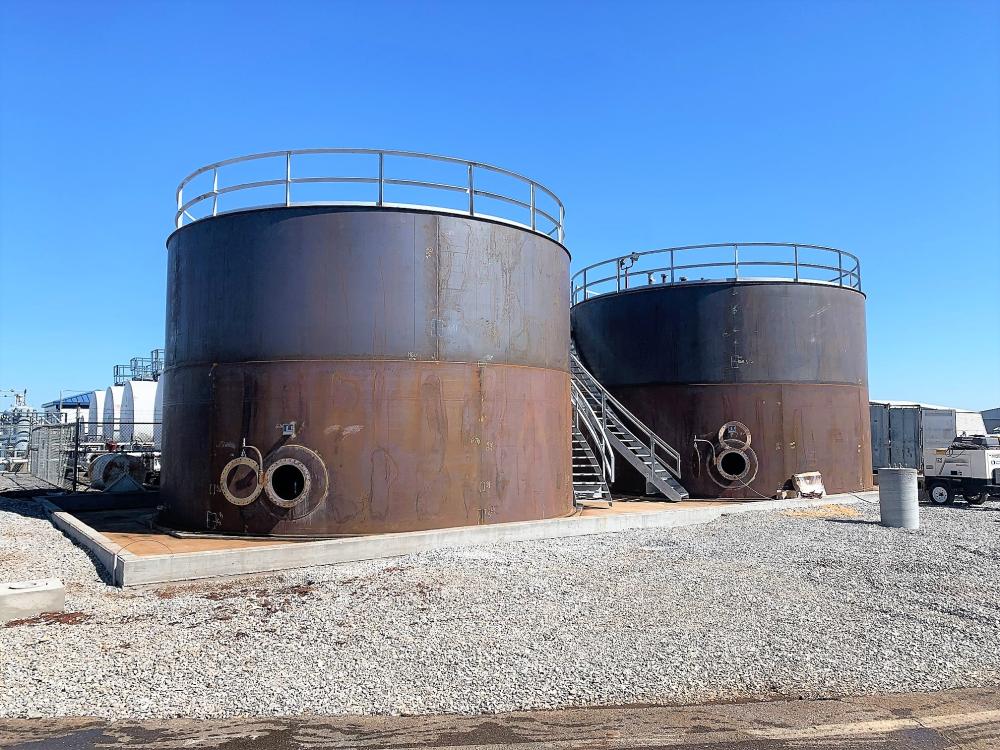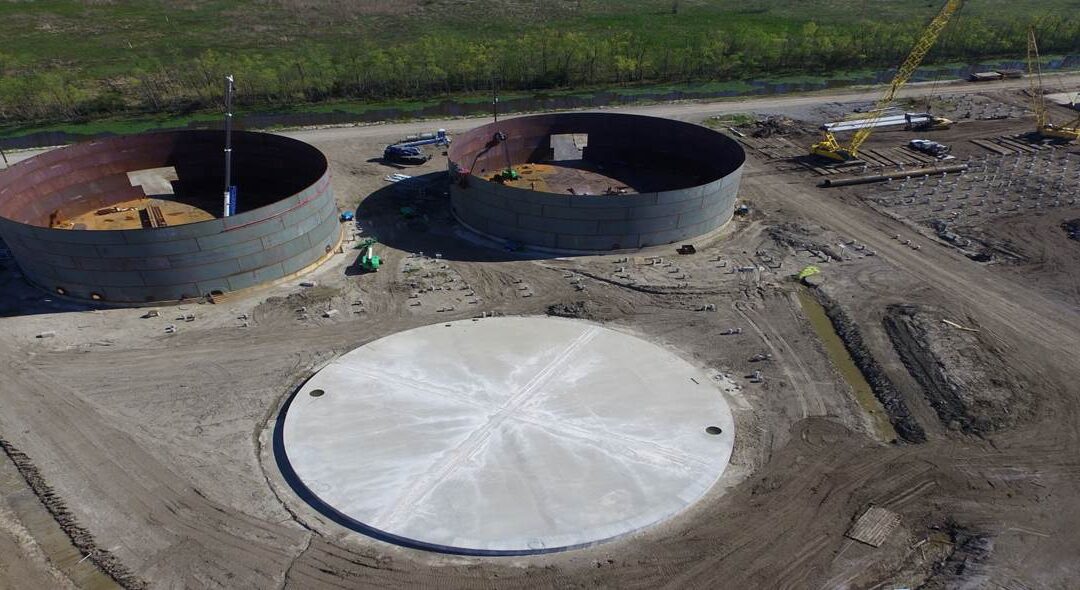The API 650 Welding Inspection Reference Sheet for Accurate Project Reviews
Exactly How Welding Examination Works: A Comprehensive Overview for Professionals
Welding evaluation plays an essential role in ensuring the security and reliability of welded frameworks. It includes an organized approach that consists of both aesthetic evaluation and advanced testing techniques. Professionals need to acquaint themselves with vital standards and laws governing the sector. Comprehending the common issues that can develop throughout welding is vital. This overview will certainly explore these aspects thoroughly, supplying understandings into the procedures that maintain quality and stability in welding.
Comprehending the Importance of Welding Inspection
While lots of might undervalue the importance of welding inspection, it plays a necessary role in ensuring the stability and security of welded structures. Reliable welding assessment determines prospective defects and flaws that can jeopardize architectural toughness and bring about disastrous failures. The evaluation process encompasses numerous techniques, such as visual evaluations, ultrasonic screening, and radiographic analyses, each adding to the overall evaluation of weld quality.
In addition to securing the structural integrity, welding examination assures compliance with sector criteria and client specs. By ensuring that welds fulfill required resistances and attributes, evaluations help preserve the integrity and longevity of parts in various applications, from building and construction to aerospace. In addition, a rigorous examination process promotes a culture of quality and responsibility among producers and welders. Inevitably, welding evaluation is not merely a step-by-step action; it is an important practice that underpins the safety and efficiency of engineered systems across diverse markets.
Secret Requirements and Regulations in Welding Assessment
The foundation of effective welding evaluation hinges on adherence to developed policies and standards. Numerous organizations, such as the American Welding Culture (AWS) and the American National Requirement Institute (ANSI), established forth guidelines that guarantee top quality and security in welding methods. Key criteria, such as AWS D1.1 for architectural welding and ASME Area IX for pressure vessels, offer thorough standards for welding treatments, inspections, and credentials. Governing frameworks, consisting of those from the Occupational Safety And Security and Health Management (OSHA), mandate security techniques and worker defenses in welding environments. Conformity with these standards is crucial for achieving constant weld top quality and reducing the risk of failings. Additionally, global standards like ISO 3834 additionally enhance international consistency in welding assessment methods. Experts should remain informed regarding these guidelines to assure that their inspection techniques straighten with market assumptions and lawful demands, therefore safeguarding both personnel and architectural stability.
First Preparation and Visual Evaluation Techniques

Effective welding examination begins with a thorough pre-inspection checklist that ensures all necessary problems are satisfied before the real examination occurs. Following this prep work, aesthetic flaw identification plays a vital duty in assessing weld high quality, enabling inspectors to spot concerns such as cracks or improper combination. With each other, these methods create the structure for an effective welding inspection process.
Pre-Inspection Checklist
Before beginning any type of welding examination, a detailed pre-inspection list is necessary to assure that all required prep work are finished which visual examination strategies are efficiently employed. Secret elements of this list include validating the welding treatment specification (WPS), seeing to it all tools is adjusted and in great functioning condition, and confirming that the inspector has the needed qualifications. Additionally, it is crucial to assess any kind of previous evaluation records and to assess the workplace for safety and security risks. The inspector should also confirm that all appropriate documents, such as material certifications and inspection documents, is conveniently offered. Completing this checklist assists to develop a strong foundation for a successful assessment process, boosting the integrity of the outcomes obtained.
Aesthetic Issue Identification
An effective aesthetic flaw identification process begins with mindful first prep work and the application of recognized visual evaluation methods. Examiners need to ensure that the welding area is clean and well-lit, as adequate presence is important for identifying issues. An extensive evaluation of the weld joint's surface area permits the identification of discontinuities, such as cracks, damages, or porosity. Assessors typically make use of devices like amplifying glasses or mirrors to improve their view of hard-to-reach areas. Furthermore, they ought to recognize with the specific welding criteria and guidelines pertinent to the job. By adhering to these methods, inspectors can properly determine prospective issues, safeguarding the stability of the weld and conformity with sector requirements.
Non-Destructive Testing Methods: A Summary
Non-destructive screening (NDT) techniques play a necessary duty in the welding inspection process by guaranteeing the stability and reliability of bonded structures without causing any damages (API 650 Welding Inspection). These strategies enable inspectors to assess the quality of welds while protecting the elements being examined. Common NDT approaches include ultrasonic screening, radiographic screening, magnetic fragment screening, and dye penetrant testing, each offering one-of-a-kind advantages
Ultrasonic testing employs high-frequency audio waves to identify internal imperfections, while radiographic testing utilizes X-rays or gamma rays to envision the internal structure of welds. Magnetic particle testing reveals surface area and near-surface defects by using an electromagnetic field and iron fragments to the weld area. Color penetrant screening highlights surface-breaking problems via the application of a tinted dye. With each other, these NDT techniques offer critical insights right into weld quality, enabling experts to make enlightened choices relating to safety and compliance in welding applications.
Common Defects and Their Ramifications
Identifying usual flaws in bonded joints is important for preserving structural stability and security. Numerous problems can develop throughout the welding procedure, each lugging possible ramifications for the overall performance of the structure. Porosity, defined by little gas pockets within the weld, can weaken the joint and jeopardize its load-bearing capacity. Fractures may create because of thermal tension or improper cooling, resulting in prospective failing under anxiety. Incomplete blend Check This Out takes place when the weld metal does not totally bond with the base product, leading to weak joints that may not stand up to designated tons. Damaging, where the base steel is worn down, can additionally lower the efficient cross-section of the weld. Furthermore, excessive reinforcement can produce tension focus that might result in failure. Acknowledging these problems quickly enables rehabilitative measures, making sure the long life and dependability of bonded frameworks in Look At This crucial applications.
Tools and Tools Made Use Of in Welding Inspection
Reliable welding examination counts on a range of specialized tools and devices to assure the high quality and stability of bonded joints. Vital tools include visual examination tools, such as magnifying glasses and borescopes, which allow examiners to very closely take a look at welds for surface defects. Non-destructive screening (NDT) techniques, such as ultrasonic testing, radiographic testing, and magnetic particle screening, are basic for determining interior flaws without harming the material.
Measurement tools, consisting of calipers and weld determines, help establish and examine measurements compliance with specifications. In addition, firmness testers examine the mechanical residential properties of bonded joints. Personal safety devices (PPE) is additionally important, securing the security of examiners while working in potentially hazardous atmospheres (API 650 Welding Inspection). Each tool offers a details objective, collectively boosting the performance of welding evaluation and adding to the integrity of completed projects
Often Asked Inquiries
What Certifications Are Required to Come To Be a Welding Examiner?
To become a welding assessor, individuals normally need relevant qualifications, such as AWS CWI or CSWIP, in addition to experience in welding processes, engineering concepts, and expertise of evaluation methods, security standards, and appropriate codes.
Just How Frequently Should Welding Inspections Be Conducted?
Welding examinations need to be conducted routinely, preferably at numerous task phases, consisting of pre-weld, during-weld, and post-weld. Frequency might also rely on market requirements, task requirements, and the intricacy of the welds entailed.
Can Welding Defects Be Repaired After Assessment?

Yes, welding flaws can usually be repaired after evaluation. Depending on the severity and kind of flaw, appropriate techniques such as remodeling or added welding might be utilized to recover structural honesty and safety and security conformity.
What Industries Require Routine Welding Examinations?

Different sectors, including building and construction, production, aerospace, and auto, need regular welding examinations - API 650 Welding Inspection. These assessments guarantee adherence to security standards read this post here and quality assurance, minimizing risks related to structural stability and functional performance in bonded components
Exactly how Do I Choose a Welding Examination Service?
To pick a welding assessment solution, one need to think about qualifications, experience, qualifications, and industry credibility. Furthermore, evaluating client reviews and assuring the solution fulfills relevant requirements can help ensure quality assessments and reliable outcomes.
While numerous may undervalue the significance of welding examination, it plays an essential duty in making certain the stability and security of bonded frameworks. Secret standards, such as AWS D1.1 for structural welding and ASME Section IX for stress vessels, provide thorough requirements for welding assessments, treatments, and credentials. Reliable welding examination begins with a thorough pre-inspection checklist that assures all needed problems are met before the actual evaluation takes area. Before beginning any welding evaluation, a comprehensive pre-inspection list is vital to ensure that all necessary preparations are finished and that visual examination techniques are efficiently utilized. Non-destructive testing (NDT) methods play an essential role in the welding evaluation procedure by ensuring the stability and integrity of bonded structures without triggering any type of damages.